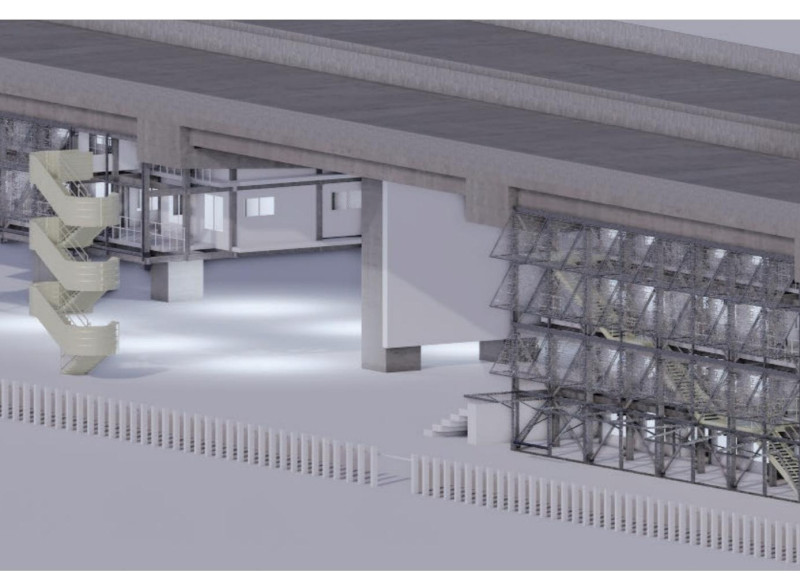5 key facts about this project
The primary concept behind the architectural design revolves around the idea of connectivity—both physically and emotionally. The layout encourages movement and engagement, with open spaces that facilitate gatherings and community events. The design promotes a sense of belonging, creating a welcoming environment where individuals can come together to share experiences. The thoughtful placement of entrances and pathways enhances accessibility, ensuring that all users can navigate the space effortlessly.
Materiality plays a pivotal role in this project, as the selected materials not only fulfill functional requirements but also embody the project's ethos of sustainability. The facade is characterized by the use of natural stone, which adds a tactile quality and a sense of permanence. This stone is complemented by large expanse of glass, allowing natural light to permeate the interiors while providing visual connections to the exterior landscape. Such combinations foster a relationship between the built environment and nature, reinforcing the project’s commitment to ecological awareness.
The interior of the building is configured to support a variety of activities. Flexible spaces can adapt to different functions, allowing the project to cater to diverse community needs. The use of open floor plans encourages collaboration and interaction, while designated areas provide zones for reflection and quietude. Attention to acoustics and lighting further enhances the usability of these spaces, ensuring an inviting atmosphere conducive to creativity and engagement.
Unique design approaches are evident throughout the project. An innovative rainwater harvesting system is incorporated, reflecting a commitment to environmentally responsible practices. This system not only reduces water consumption but also serves as an educational element, promoting awareness of sustainable practices within the community. Additionally, the integration of greenery—both on the facade and within the interior spaces—contributes to improved air quality and fosters a connection to nature.
The project's architectural details, from the carefully considered window placements to the intricate patterns on the facade, highlight a dedication to craftsmanship. These elements enrich the overall aesthetic, adding depth and character to the design without overwhelming simplicity. The careful selection of finishes, from matte surfaces to textured components, creates an engaging sensory experience and emphasizes the project’s commitment to quality.
In summary, the architectural project exemplifies a thoughtful approach to design that is responsive to its surroundings and the needs of its community. By prioritizing connectivity, sustainability, and flexibility, the project stands as a testament to modern architectural principles. Its careful attention to materiality and detail showcases a deep understanding of the relationship between built environments and their occupants. For those interested in further exploration of this project, including architectural plans, architectural sections, and detailed architectural ideas, a thorough presentation awaits, offering valuable insights into every aspect of this carefully crafted design.























